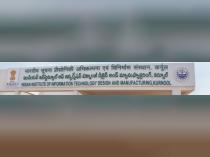What is the IIITDM Kurnool cutoff for all categories in the JEE Main UG 2025?
-
1 Answer
-
IITDM Kurnool JEE Main cutoff 2025 has been released for the first round. The cutoff was released for different categories belonging to the All India quota. The cutoff ranks among the General AI category candidates varied between 30326 and 48197. Among all the courses, the BTech in CSE turned out to be the toughest specialisation among the General AI category.
In the table below, students can find the cutoff range for different categories in the first round:
Categories Round 1 Cutoff Range General 30326-48197 OBC 11442-16275 SC 4445-8149 ST 2237-3368 EWS 4803-6850 PWD 1618-1713
Similar Questions for you
- Candidates with JEE Main percentile 20 and above are given first priority in the REAP merit list. Then, candidates with JEE Main percentile less than 20 are considered.
- Second priority will be given to the class 12 marks.
- Candidates with DVoc qualifications will be given third priority
Candidates with JEE Main scores of 20 percentile and above are given priority in REAP merit list. If you do not have JEE Main score, you will get less priority in ranking.
JMI JEE Main Cutoff 2025 has been released for admission to the BTech programme. The first round closing cutoff ranged from 17752 and 51961 for the General category candidates under the All India quota. The most sought-after BTech specialisation was B.Tech. in Computer Engineering with a cutoff rank of 17752, and the least popular was B.Tech. in Civil Engineering programme. For more details, click here.
The MSU Baroda JEE Main cutoff 2025 was released for admission to the BE/BTech programme for all rounds and categories under the All India quota. For the General AI category the cutoff ranged from 900036 to 932461 for admission to the BE course. The toughest specialisation according to the first round closing ranks was B.E. in Computer Science and Engineering, and the easiest BE specialisation was B.E. in Irrigation and Water Management, with the first round closing cutoff being 900036 and 990078.5, respectively. Students can click here to know more about JEE Main cutoff 2025.
Candidates who are participating in Uttarakhand BTech counselling through JEE Main score need to provide details about their application & roll number and All India Rank (AIR) of JEE Mains exam. The allotment of seats will be based on the rank of JEE Main.
Taking an Exam? Selecting a College?
Get authentic answers from experts, students and alumni that you won't find anywhere else
Sign Up on ShikshaOn Shiksha, get access to
- 66k Colleges
- 1.2k Exams
- 680k Reviews
- 1800k Answers

